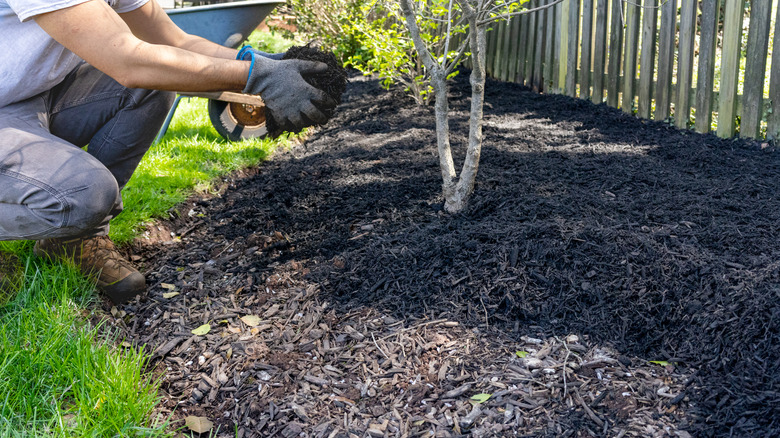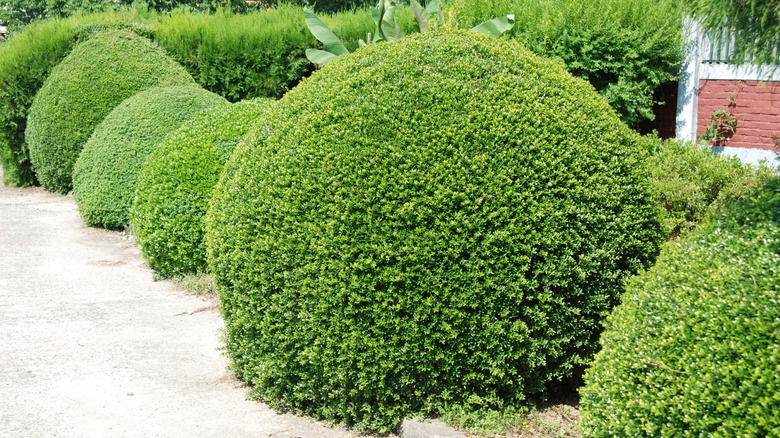The Festive Shrub That Is Dying For A New Layer Of Mulch In November
Fall mulching isn't ideal for every plant. Some don't require the insulation or do well with moist soil, while other plants may have changing mulch needs as they grow and establish themselves. However, while some garden additions might turn up their noses at a nice layer of mulch, many are desperate for something to keep them warm. Evergreens, for example, tend to struggle a little bit with winter conditions and appreciate your hard work adding mulch around their edges. One festive plant, the Japanese holly (Ilex crenata), never turns down the chance for a little extra protection, and November is a great time to add or replenish a layer around it, before the cold really sets in and freezes its roots. It is an evergreen plant that doesn't need much in the way of care, but a layer of mulch at least once a year can really keep it thriving. In fact, Japanese holly is among the best evergreen shrubs to help make your landscaping look great all year, as long as you live in USDA hardiness zones 5 to 8.
Though it prefers well-draining soil, Japanese holly does like the ground around it to stay pretty moist, which is where the mulch helps out even more, adding another layer to prevent evaporation. Before you jump right into mulching, though, you need to understand what to avoid so your Japanese holly can be healthy this November and through the holiday season. And it comes down to more than just choosing the best type of mulch for your garden.
How to mulch your Japanese holly, and practices to avoid
There are a few common fall mulching mistakes to avoid with Japanese holly that can hurt your plant or make the mulch ineffective. For example, the right thickness is incredibly important. A layer of about 3 inches is fine for many plants, with the ideal range running between 2 and 4 inches, depending on what you're planting. For Japanese holly, you want to go right in the middle. This helps keep the soil moist and insulated against the freezing winter weather without suffocating the holly or allowing for fungi and bacteria to take over.
Additionally, you want to cover the surface above the entire root system, extending it a bit past the shrub's drip line to be sure you've covered as much as possible. And, if you have some left over at the end, don't pile more on top; instead, consider other ways to use mulch in your yard and garden, because finding different uses is much safer than adding too thick a layer around your plant. The final tip is that you want to keep the mulch even. You may feel it's best to pile it up around the base of the shrub to help maintain the warmer temperatures, but it will do more harm than good when it covers the shrub's trunk and branches. Piling any material up in this way can lead to issues related to diseases, rot, and suffocation.

